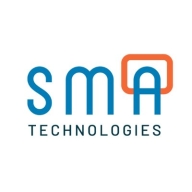

AutoSys Workload Automation and VisualCron compete in the workflow automation category. VisualCron leads in feature flexibility, while AutoSys is superior for high-volume enterprise tasks.
Features: AutoSys offers robust scheduling, enterprise scalability, and reliable operations, perfect for large-scale environments. VisualCron provides customizable triggers, intuitive configuration, and diverse operation support.
Room for Improvement: AutoSys could improve its integration capabilities with ERP and CRM systems, enhance UI design, and streamline setup processes. VisualCron may benefit from expanding platform support, enhancing security features, and optimizing performance for larger workloads.
Ease of Deployment and Customer Service: AutoSys presents a complex deployment due to its comprehensive nature but offers strong support networks. VisualCron is known for simple deployment and intuitive setup, allowing quicker resolution times with reliable customer service.
Pricing and ROI: AutoSys involves a high initial setup cost, with significant ROI over time for heavy automation needs. VisualCron offers a lower initial investment, delivering quicker ROI for smaller operations. Its cost-effectiveness and feature set make it appealing for tailored automation solutions.
| Product | Market Share (%) |
|---|---|
| AutoSys Workload Automation | 9.9% |
| VisualCron | 1.2% |
| Other | 88.9% |


| Company Size | Count |
|---|---|
| Small Business | 13 |
| Midsize Enterprise | 5 |
| Large Enterprise | 77 |
| Company Size | Count |
|---|---|
| Small Business | 5 |
| Midsize Enterprise | 1 |
| Large Enterprise | 5 |
AutoSys Workload Automation efficiently manages complex workloads across platforms, offering high availability and seamless platform integration. Its reliability and scalability are valued for enterprise-level automation, enhancing job management and reducing manual effort with robust scheduling and advanced security.
AutoSys Workload Automation is known for its user-friendly capabilities, effectively handling cross-platform job scheduling with mainframe integration. It supports high availability, ensuring reliable performance for critical operations. Despite enhancements needed in its GUI and integration capabilities, AutoSys remains effective for batch processing, file transfers, ETL, and managing dependencies across servers and applications. Improvements are suggested for deployment complexity and monitoring features. More effective licensing and scalability solutions, along with modern subscription models and cloud integration, could address cost and automation barriers.
What are AutoSys Workload Automation's key features?In industries like banking, insurance, and retail, AutoSys Workload Automation facilitates 24/7 automated job execution, ensuring smooth task automation. It allows companies to manage enterprise workloads effectively, catering to batch processing, file transfers, and handling job dependencies in a consistent manner.
VisualCron offers task automation through a visual interface, eliminating the need for programming skills. With capabilities like alerting and variable usage, users benefit from integration with databases, timely task execution, and cross-platform operations.
VisualCron empowers users by simplifying complex workflows. It allows seamless task automation through features like interactive scheduling and role-based operations. Users appreciate its integration capabilities, replacing multiple tools with a comprehensive automation solution. The support system ensures quick assistance, making it a reliable choice for workflow visualization and task execution. However, areas like error handling and interface design require enhancements for improved user experience.
What are the key features of VisualCron?Organizations leverage VisualCron in industries like finance and logistics to automate tasks such as encryption and secure file transfers. It's also integral in managing data operations, facilitating communications between systems, and executing SQL jobs, enhancing operational efficiency across sectors.
We monitor all Workload Automation reviews to prevent fraudulent reviews and keep review quality high. We do not post reviews by company employees or direct competitors. We validate each review for authenticity via cross-reference with LinkedIn, and personal follow-up with the reviewer when necessary.